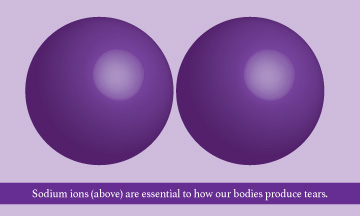 Researchers at the University of Arizona recently discovered a previously unknown potential cause of dry eye disease that happened unexpectedly.
Researchers at the University of Arizona recently discovered a previously unknown potential cause of dry eye disease that happened unexpectedly.
The research was conducted at the Arizona Health Sciences Center’s UA Steele Children’s Research Center related to a specific protein called NHE8. In medical terminology, NHE8 is a sodium/hydrogen exchanger protein. In simpler terms, there is an important role NHE8 plays in transporting sodium and electrolytes through the gastrointestinal tract.
Before going further, let’s briefly focus on how sodium and electrolytes relate to dry eye disease. Sodium is one of 7 essential electrolytes we all need. Sodium is a positive ion (electrically charged atom or molecule) that happens when salts are dissolved in fluid. Any fluid that conducts electricity is an electrolyte. This controls the total amount of water in our bodies, including the quality and amount of tears our eyes produce. When this is out of balance it can cause dry eyes.
Back to the research in Arizona, it was previously discovered that NHE8 impacts mucosal protection in the intestinal tractand male reproduction in mice. When NHE8 was removed the mice developed gastric ulcers, became sterile,and were more susceptible to infections.
The more recent, unexpected discovery was that mice also developed dry eye disease. “We observed that NHE8 protein is highly expressed in the ocular surface epithelial cells and lacrimal glands in humans and mice,” said Dr. Hua Xu, UA Steele Center researcher. Dr. Xu went on to say that loss of NHE8 function resulted in decreased tear production and mucous secretion.
In addition to Dr. Xu, Fayez K. Ghishan, MD, UA Steele Center Director, led the research. Doctors Ghishan and Xu also collaborated with Mingwu Wang, MD, PhD, associate professor, UA Department of Ophthalmology and Vision Science, considered an expert in treating patients with dry eye disease.
